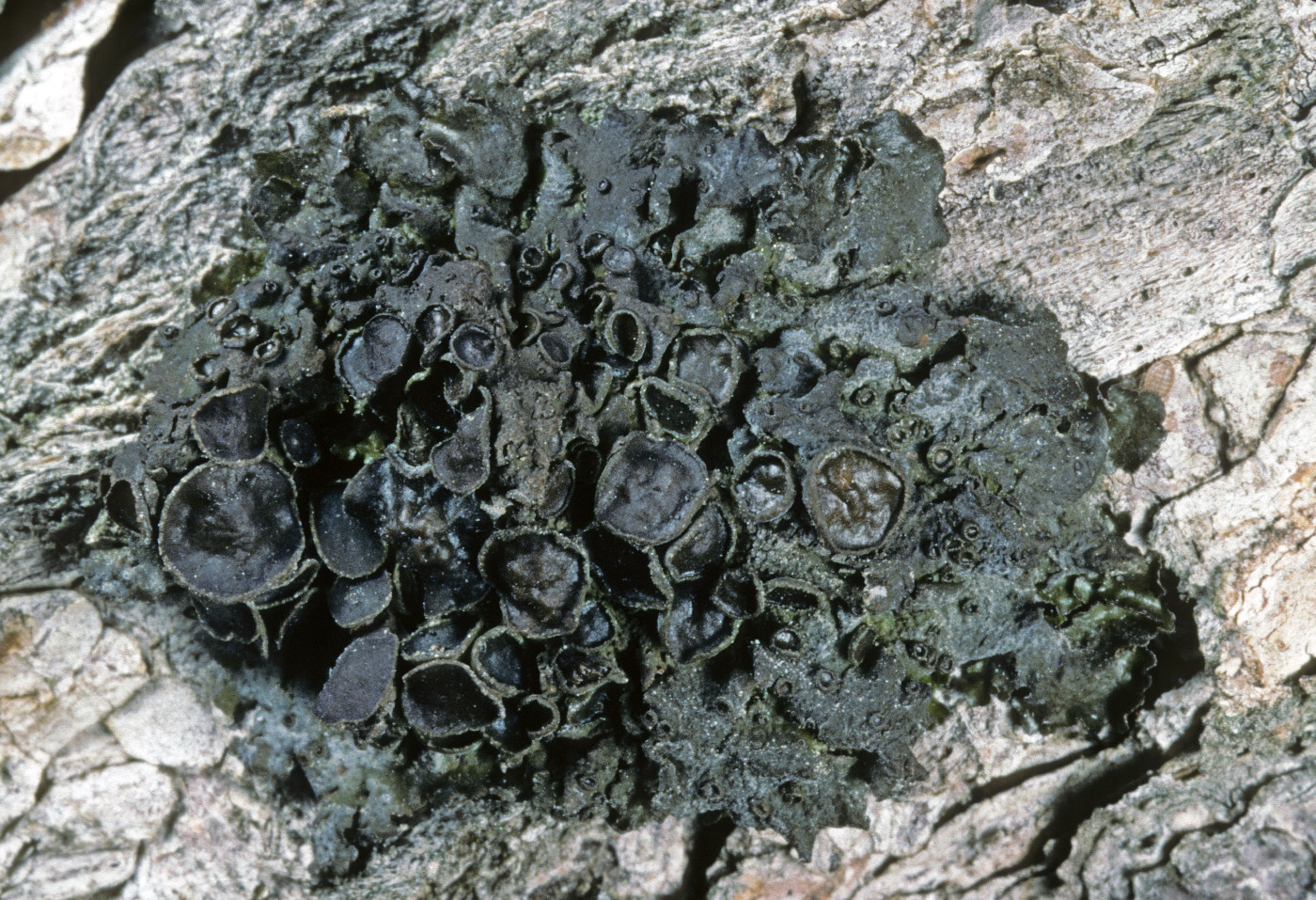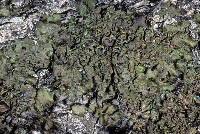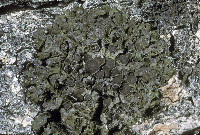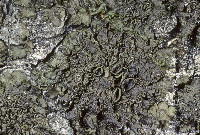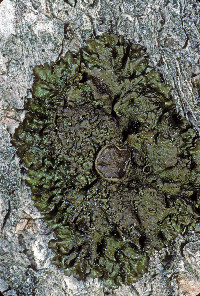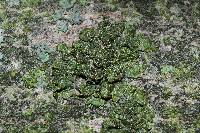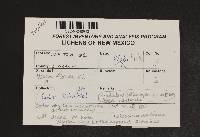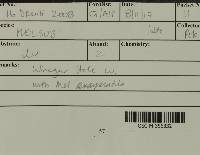
Consortium of Lichen Herbaria
- building a Global Consortium of Bryophytes and Lichens as keystones of cryptobiotic communities -
- Home
- Search
- Images
- Species Checklists
- US States: O-Z >
- US National Parks
- Central America
- South America
- US National Parks
- Southern Subpolar Region
|
|
|
|
Family: Parmeliaceae
[Melanelia subolivacea (Nyl.) Essl., moreParmelia subolivacea Nyl.] |
Nash, T.H., Ryan, B.D., Gries, C., Bungartz, F., (eds.) 2002. Lichen Flora of the Greater Sonoran Desert Region. Vol 1. Thallus: adnate to loosely adnate appressed throughout or somewhat raised at the periphery, foliose, up to 8 (-11) cm diam., lobate lobes: short and rounded, ± contiguous to imbricate, (1-) 2-6 (-l 0) mm broad, ± flat upper surface: olive-brown to dark brown, smooth to weakly rugose or pitted near the periphery, inward becoming more strongly rugose and often grossly so, sometimes with isidioid papillae or tubercles, these verging on true isidia in extreme cases; dull throughout or somewhat shiny on the lobe-ends; pseudocyphellae usually sparse or absent, occasionally rather numerous but even then small and rather obscure, the laminal tubercles developed by some specimens often bearing distinctive pseudocyphellae lower surface: dark brown or black, pale brown to tan at the periphery or occasionally throughout; smooth to rugulose, dull to rather shiny; moderately to rather densely rhizinate, the rhizines concolorous with the lower surface or paler Apothecia: common, up to 5 mm diam., sessile to short stipitate, concave to flattening or sometimes convex, the margin entire to more often crenate or tuberculate, often with rather numerous pseudocyphellae, especially on the tubercles asci: clavate, 8-spored ascospores: ellipsoid to subglobose, (7-) 8-10.5 x 5-8 (-9) µm Pycnidia: common, immersed conidia: acerose to weakly fusiform or weakly bifusiform, 6.5-8.5 (-10) x 1 µm Spot tests: cortex K-, C-, KC-, P-, HNO3-; medulla K-, C-, KC-, P- Secondary metabolites: none detected. Substrate: bark or rarely wood World distribution: western North America, Michigan, Canary Islands Sonoran distribution: frequent, from coastal islands to mountains of Arizona. Notes: Typical specimens of M. subolivacea are only likely to be confused with M. multispora, which is essentially indistinguishable in outward morphology, but has more than eight spores per ascus (usually 12-32), and a more restricted distribution. However, M. subolivacea is extremely variable in size, general appearance, and in the amount and size of papillae or tubercles it produces. Specimens with distinctive papillae, especially if they are rather uniformly distributed, are still sometimes misidentified as M. exasperata, a species occurring in eastern North America. At times the papillae and tubercles of M. subolivacea become so elongate that they appear like very irregular isidia, and these specimens have been often misdetermined as e.g. M. elegantula. |
|
|
|
Powered by Symbiota

